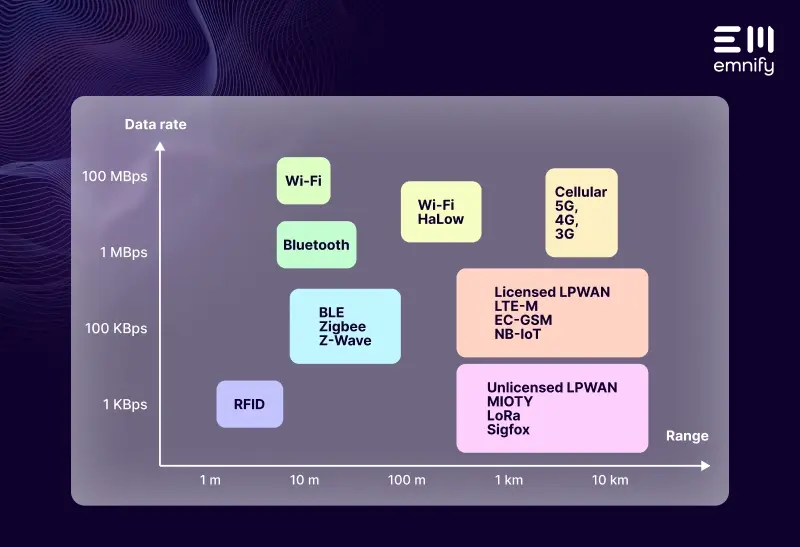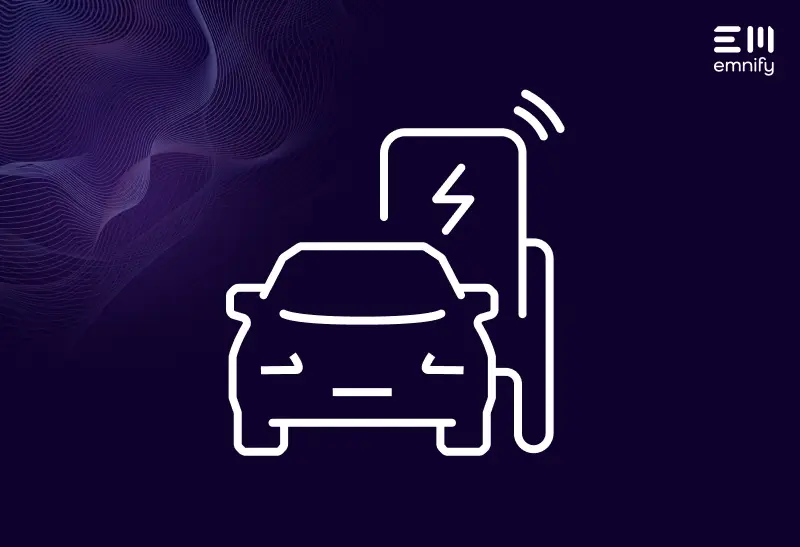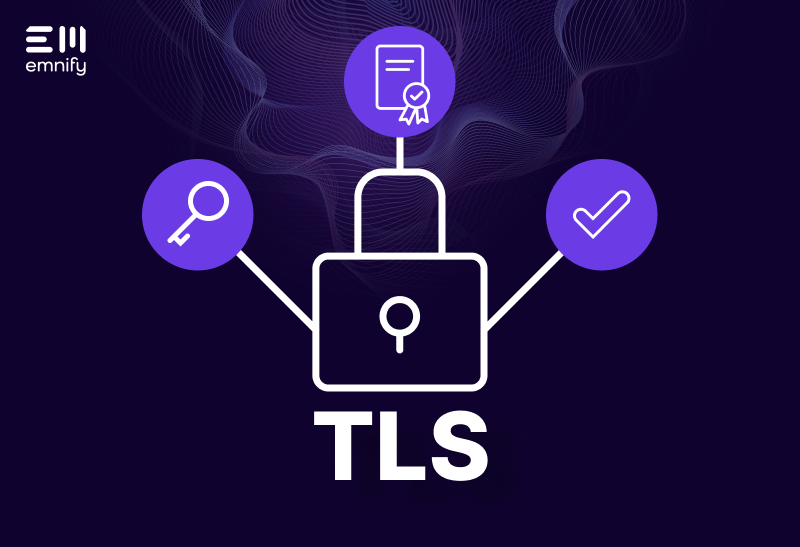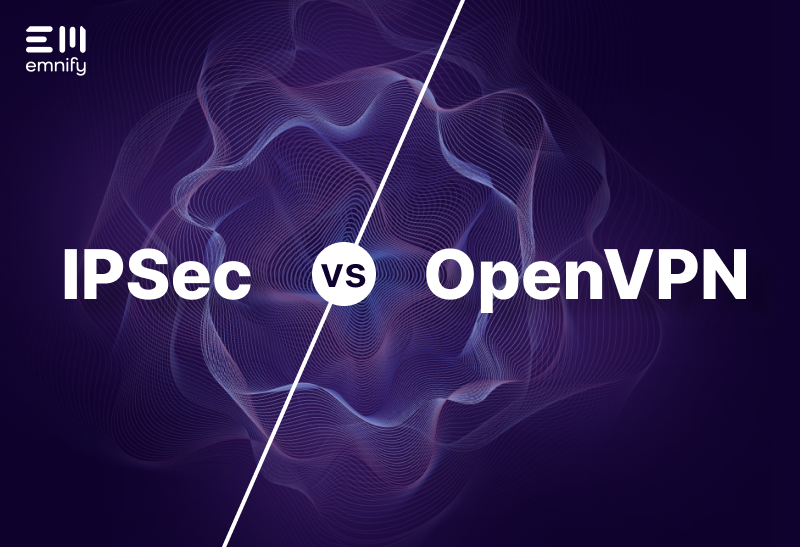

When network entities like servers, gateways, routers, applications, and connected devices interact, protocols give them a shared language. A protocol is a set of rules both network entities must have in common in order to communicate. It governs what their interactions look like, what values and attributes can be transmitted, how they’re received and processed, what security methods will be used, and more.
In the Internet of Things (IoT), the protocols you choose determine your application’s complexity and help you prioritize the qualities that impact service and performance, such as speed, clarity, power saving, or security.
Some telecommunications protocols have been in use for decades, like IP (Internet Protocol) or GSM (Global System for Mobile Communications), and engineers have adapted them to new devices and IoT contexts over time. Others are more recent developments, born out of highly specific IoT use cases, like OCPP (Open Charge Point Protocol), which enables electric vehicle charging stations to interact with a central system.
As IoT continues to evolve and new devices and use cases arise, we’ll likely see more specialized IoT protocols emerge as well. At the same time, older, obsolete protocols will simply fall out of usage.
In this guide, we’ll cover over 40 of the most popular IoT protocols spanning various network layers, explaining what they are and how they affect your devices.
- IoT application protocols
- Industry-specific IoT application protocols
- IoT protocols for consumer devices
- IoT transport protocols
- Network layer IoT protocols
- Physical and data link layer IoT protocols
- IoT security protocols
If you want help talking through how your IoT connectivity solution will influence the protocols available to you, talk to one of our experts.
IoT application protocols
The application layer of a network enables network entities to identify and interact with each other.
MQTT (Message Queueing Telemetry Transport)
MQTT is a lightweight communication protocol specifically designed for IoT and M2M applications. It’s ideal for remote environments or applications with limited bandwidth. MQTT uses a connection oriented publish/subscribe architecture, where MQTT applications can either publish (transmit) or subscribe to (receive) topics, and an MQTT broker passes information from the publishing client to the subscribed client.
So for instance, an oil rig may have a predictive maintenance sensor that detects changes in vibrations and uses the MQTT protocol. The sensor “publishes” the vibration level to the broker, which the MQTT broker then passes to a software application that has subscribed to the topic “vibrations,” which can then trigger an alert when the level is above a threshold. .
HTTP (HyperText Transfer Protocol)
Hypertext Transfer Protocol is the most widely used protocol for navigating the Internet and to make data available over REST-APIs. The main advantage of using HTTP for IoT is that web application developers can use the same mechanism to send data to a Webserver - via an HTTP POST request.
The drawbacks are that HTTP uses a connectionless request-respond communication, meaning every message needs to include authentication information—which requires data and energy consumption. Nevertheless HTTP might be ideal for use cases which have fewer data and battery constraints and where devices already need to call existing REST-APIs.
Like MQTT and MQTT over WebSocket, HTTP is one of the protocols that is supported by standard IoT cloud services such as AWS IoT and Azure IoT.
WebSocket
WebSocket is a bi-directional communication protocol designed to quickly send large quantities of data in web applications. A WebSocket establishes a connection between client and server and therefore after the initial connection establishment—every single message only has small overhead. Devices and servers can simultaneously transmit and receive data in real-time, making this protocol best-suited for IoT applications where low latency is critical, communication happens frequently, and data consumption is less important.
AMQP (Advanced Message Queuing Protocol)
AMQP is an open source protocol for Message-Oriented Middleware (MOM). It’s designed to facilitate communications between systems, devices, and applications from multiple vendors—and it was not directly designed for IoT. Opposed to MQTT it supports more routing options than just publish / subscribe on topics—but this flexibility comes with complexity on application setup and additional protocol overhead. AMQP is also supported by Azure IoT for device communication.
CoAP (Constrained Application Protocol)
Constrained Application Protocol (CoAP) is designed for low-power, lossy networks, also known as “constrained” networks. CoAP is usually paired with User Datagram Protocol (UDP) which makes it highly efficient, making it appealing for IoT applications where battery conservation is important. For example, it’s often used in smart meter communications. CoAP can also use TCP or SMS as transport mechanism.
LwM2M (Lightweight Machine-to-Machine)
The Lightweight Machine-to-Machine (LwM2M) protocol builds on CoAP for a highly efficient low-power communication, but LwM2M also specifies device management and provisioning functionality. Therefore, LwM2M, for example, has a standardized procedure to clarify which security mechanism is used and how device firmware is updated. As LwM2M is build on top of CoAP it can be used with UDP, TCP, and SMS for data transport.
XMPP (Extensive Messaging and Presence Protocol)
Extensible Messaging and Presence Protocol is a communications protocol built on Extensible Markup Language (XML). XMPP was initially designed for instant messaging (IM)—which also explains that it comes with an overhead for the exchange of presence information and is not optimized for memory constrained devices. Nevertheless XMPP allows for the definition of the message format and therefore handles very well structured data, as well as establishes a device’s identity and facilitates communications between different platforms. This open-source technology is highly accessible and is still being enhanced with new IoT-related developments.
DDS (Data Distribution Service )
Data Distribution Service protocol is a real-time, interoperable communication protocol designed for solutions that require significant coordination, reliable transmissions, and distributed processing between the devices itself. Instead of sending data to a central hub or broker, data can be directly been exchanged between peers making it more robust and efficient. DDS uses a publish/subscribe mechanism where devices subscribe to a topic and devices sending to the topic are then using multicast to distribute the information to the subscribers. DDS can use TCP and UDP as transmission protocol.
SMS / SMPP (Short Message Peer-to-Peer Protocol)
Short Message Service allows devices and applications to send and receive text messages over a cellular connection. Cellular IoT devices use Short Message Services (SMS) to send and receive data to the application or to another peer in the mobile communication network.
An application can communicate with devices programmatically by connecting to the Short Message Service Center (SMSC) of a service provider using the Short Message Peer-to-Peer Protocol (SMPP) or an SMS Rest-API. Telematics providers can use SMPP to provision and configure their devices remotely.
USSD (Unstructured Supplementary Service Data)
Also known as “Feature Codes” or “Quick Codes,” USSD is a messaging protocol used in cellular networks based on the Global System for Mobile Communications (GSM). IoT businesses use USSD to retrieve text-based data (such as location, temperature, and other status updates) from IoT devices without relying on a data connection. Unfortunately, since many carriers are sunsetting their 2G and 3G networks, USSD will become obsolete in the near future.
Simple Sensor Interface (SSI) protocol
SSI enables IoT sensors to transmit data to or receive data from a terminal such as a computer or mobile device. As the name implies, the protocol is not very complex, so communicating via SSI uses very little power. However, there’s been no update to the protocol since 2006, so it may already be obsolete.
Industry-specific IoT application protocols
In telecommunications, it’s fairly common for unique protocols to emerge in order to optimize and improve networking capabilities for particular use cases. Here are some examples of protocols that were designed with a specific IoT application or industry in mind.
OCPP (Open Charge Point Protocol)
Open Charge Point Protocol (OCPP) is an open standard communication protocol for Electric Vehicle (EV) charging stations. It defines interactions between EV charging stations and a central system - mainly the Charging Station Management System (CSME), helping to facilitate security, transactions, diagnostics, devic management and more. While in the beginning using SOAP - newer OCPP protocols support communication via WebSocket and JSON over WebSockets.
IEC 62056
IEC 62056-21 is a set of standards for electricity meters. Designed by the IEC (International Electrotechnical Commission), the protocols define data exchanges for meter reading, as well as tariff and load control. The intent of this protocol is to standardize these communications internationally.
OBD2/CAN bus
The On Board Diagnostics 2 (OBD2) protocol defines communications between a vehicle’s electrical systems and its OBD port. When one of these systems experiences a malfunction, it uses OBD2 to communicate the relevant Diagnostic Trouble Codes (DTCs) to the OBD port. Nowadays ODB2 is used to capture vehicle telematics information such as temperature, velocity, fuel consumption, brake or tire pressure. The CAN bus is another protocol that works in conjunction with OBD2, defining how the communication takes place between microcontrollers of the vehicle.
OPC UA
OPC Unified Architecture (UA) is an interoperable, open-source communication protocol used in industrial IoT, specifically to exchange data between connected sensors and the cloud. This highly versatile protocol isn’t tied to a specific operating system, programming language, or communication protocol, making it useful for non-industrial applications as well.
Wireless M-bus
Wireless M-bus is a specialized European standard designed for smart meter communication. Devices are communicating in a star like topology with a central gateway or data logger. The Wireless M-bus protocol suite that goes across the physical and link-layer (EN 13757-2) and application layer (EN 13757-3) has good indoor penetration based on the use of low frequencies (169, 433 and mainly 868 MhZ) and has a wide adoption in Europe. However, this open source protocol doesn’t have a certification standard, so providers and manufacturers who use it aren’t always compatible.
IoT protocols for consumer devices
Consumer IoT devices become more valuable when they can communicate with devices from different brands, which may rely on different connectivity solutions. Some manufacturers develop their own proprietary protocols to provide specific functionality to particular devices, but at times they’ll collaborate to enable interoperability.
Matter
Matter is a recently developed application protocol born out of a collaboration between Google, Apple, Amazon, Samsung SmartThings, and the Zigbee Alliance (now the Connectivity Standards Alliance). It was designed to enable communication and improve compatibility between smart home devices from different vendors.
Weave
Weave is an IoT protocol which Nest Labs developed and Google later acquired. While it was initially developed for Nest products, Google plans to integrate it with connected Android devices as well. It’s compatible with ethernet, Wi-Fi, Bluetooth Low Energy (BLE), cellular networks, and other IPv6 technologies.
Homekit Accessory Protocol (HAP)
Apple developed HAP so that manufacturers could produce third-party devices that can communicate with Apple products around the home. For example, consumers can control smart lights, connected locks, and IoT thermostats from their Apple products if these other devices were developed with HAP.
KNX
KNX is an open standard used for building automation, which descends from three European protocols: European Home Systems Protocol (EHS), BatiBus, and European Installation Bus (EIB). It typically operates over twisted pair links, but can use other links as well.
X10
X10 was developed in 1975 to enable remote control of household devices including lamps, appliances, and outlets. It’s the oldest networking technology specifically designed for connecting home devices and it’s still widely used today. X10 includes specifications for using Power Line Communication (PLC) and RF.
Z-Wave
Z-Wave is a smart home protocol that uses a mesh network topology to connect devices to a central hub. It offers longer range than early generations of Bluetooth and uses less power than WiFi. When a consumer issues a command to a connected device through a smartphone or PC, the data packet uses the mesh of connected devices as nodes to reach the central hub, which then routes the data through the nearby devices to reach its intended destination.
IoT transport protocols
Transport layer protocols define how data gets packaged, sent, and received. In IoT, the best protocol for your device depends on what needs to be sent and which quality is more important for your use case: speed or reliability.
UDP (User Datagram Protocol)
User Datagram Protocol (UDP) is a transport protocol that prioritizes speed over reliability, using a connectionless process to send data packets to a destination. Due to its low latency, UDP is ideal for time-sensitive use cases like video streaming, Voice over Internet Protocol (VoIP), video gaming, and Domain Name System (DNS) lookups.
TCP (Transmission Control Protocol)
Transmission Control Protocol (TCP) sets the parameters for data exchanges between software applications, confirms what is being sent, where it’s coming from, where it’s going, and whether or not it arrived correctly. TCP prioritizes accuracy over speed, ensuring that data arrives in order, with minimal errors, and without duplication. If data gets lost in transmission, TCP requests the data packets be resent.
Network layer IoT protocols
The network layer packages transmissions and routes data packets from one network entity (such as a router, server, node, application, or device) to another, determining the path they will take to get there.
IP (Internet Protocol)
Internet Protocol is basically the key to the Internet. It gives network entities an IP address, which allows other network entities to send them data packets even if they are not on the same network.
Physical and data link layer IoT protocols
Physical and data link layer protocols arguably have the biggest impact on your IoT solution’s capabilities and service. These are the standards that define the type of network your device relies on, which determines what kind of coverage, signal strength, power consumption, and data throughput you’ll be working with.
Wi-Fi
Wi-Fi is a suite of wireless network protocols built primarily on IEEE 802. It creates a Local Area Network that nearby devices can connect to. While these networks are ubiquitous in homes and businesses and can offer good data throughput, Wi-Fi isn’t ideal for many IoT applications, as basic structures like walls can greatly disrupt its signal strength, and since nearly all Wi-Fi networks use 2.4GHz or 5GHz frequency bands, they’re prone to interference. It also consumes more power than protocols that were designed with IoT devices in mind.
LTE (Long Term Evolution)
LTE is a 4G standard that is built on 2G and 3G cellular infrastructure to provide significantly faster data speeds and new applications including multimedia streaming, Voice over IP, and video conferencing. LTE is widely used today and offers excellent coverage, but is not suitable for battery-powered IoT devices and is quite expensive. Therefore, for IoT use cases, there is also a variant LTE CAT-1 which is more simple and less costly, but still not feasible for battery powered devices.
GSM
The Global System for Mobile Communications (GSM) specifies how 2G (second generation) cellular networks operate. Despite being three decades old, it’s currently the most widely used network technology in IoT applications due to its simplicity, affordability, and accessibility. As MNOs shut down their 2G networks, IoT manufacturers need to weigh the risks of continuing to rely on GSM or using it as a backup.
GPRS
General Packet Radio Service (GPRS) is an upgrade to 2G networks, sometimes referred to as 2.5G. It provides higher data rates and additional services, including “always on” Internet access and Internet applications for IoT devices.
UMTS
Universal Mobile Telecommunications Service (UMTS) has become practically synonymous with 3G, the third generation of cellular networks. It offers greater bandwidth, more efficient use of the radio spectrum, and more advanced cellular capabilities than GSM, including video transmission. UMTS has been popular in IoT because it consumes less power than 4G LTE, but offers greater throughput than GSM. However, UMTS is almost two decades old, and carriers are sunsetting their 3G networks to free bandwidth for newer networks. So depending on where you deploy, relying on UMTS could be a gamble—the standard may not last as long as your device.
5G
5G networks are designed to achieve a peak download speed of 20 Gbps and peak upload speed of 10 Gbps. The average rates are more like 100 Mbps for downloads and 50 Mbps for uploads. This is several times faster than 5G’s predecessor, 4G, and the theoretical peak speeds are 100 times faster. Even though in developed countries early 5G technology has been rolled out, it is still early for the use of 5G in IoT because of device costs and energy consumption.
NB-IoT
Narrowband IoT (NB-IoT) is a specialized cellular network made for the Internet of Things. This standard enables devices to utilize frequencies within a carrier’s licensed bands and use minimal power, particularly when a device isn’t transmitting. It allows devices to use power-saving features, but it has drawbacks as well—the main being that there is no redundant coverage available with NB-IoT, and global deployments require multiple providers as roaming is difficult with NB-IoT.
LTE-M
Long Term Evolution Machine Type Communication (LTE-M) is a type of 4G cellular network specifically designed for the Internet of Things. LTE-M provides many of the same advantages as NB-IoT, but it has 10 times faster data speeds and offers better coverage due to the possibility to roam between networks. (Notably, NB-IoT has slightly better indoor penetration.)
NFC (Near Field Communication)
NFC builds on Radio Frequency Identification (RFID) to facilitate connectivity between two devices that are within 1.5 inches (or 4cm) of each other. If one of these devices is connected to the Internet, NFC also enables the other device to access online services through the connection. This niche protocol continues to play an integral role in daily life through applications like tap-to-pay.
PLC (Power Line Communication)
PLC leverages existing energy infrastructure to facilitate IoT communication. With PLC, power lines provide the infrastructure for data transmissions in addition to electricity. Since it builds on existing infrastructure, PLC is a relatively simple connectivity solution, but unfortunately, it’s also not very reliable. Electrical currents can and do interfere with data transmissions.
MIoTy
MIoTy is a Low Power Wide Area Network (LPWAN) standard that uses telegram splitting and unlicensed frequency bands to provide efficient, large-scale connectivity for industrial IoT applications. It splits data into subpackets and applies error-correcting codes before sending them, making transmissions more resistant to interference. MIoTy is open source and standardized by the mioty alliance.
LoRa (Long Range)
LoRa is the physical layer standard that makes LoRaWAN possible. It uses spread spectrum modulation to increase signal strength, improve security, and enable multiple-access communications. LoRa builds on the chirp spread spectrum to distribute signals across a greater bandwidth. LoRa uses unlicensed low frequency bands 169 MHz, 433 MHz (Asia), 868 MHz (Europe), and 915 MHz (North America).
LoRaWAN (Long Range Wide Area Network)
LoRaWAN is the communication protocol that builds on LoRa to connect devices to a network. It’s a type of LPWAN standard designed for IoT applications. It uses very little power, has good coverage, and works well indoors. However, unless you can find a LoRaWAN vendor with coverage in the area you’re deploying, you have to deploy and manage your own infrastructure. This can be especially challenging when you have multiple deployments.
Sigfox
Sigfox networks use very small frequency bands and each country only has a single Sigfox network operator. This standard is used in everything from retail stores to industrial IoT to smart alarm systems, but while it has coverage up to 1,000 kilometers, devices that use Sigfox can only send and receive extremely small messages, which makes firmware updates and data-intensive processes impossible.
Neocortec
Neocortec is a proprietary mesh networking protocol that boasts “cable-like reliability” and emphasizes simplicity. Data transmission goes from node to node until it reaches its destination. Similar to IP networks Neocortec also providers acknowledge (TCP like) and un-acknowledge UDP like data transport. It’s meant to be fast to set up, low maintenance, and simple to develop with. This is an IoT connectivity solution that requires manufacturers to build and manage their own infrastructure on site. Neocortec uses unlicensed bands such as 868 and 915 MhZ and 2.4GHz.
Weightless
Weightless is an open Low Power networking standard protocol driven by the Weightless alliance operating in unlincensed sub-GHZ bands. There were three distinct Weightless standards, each of which relies on different technology:
- Weightless-W - operating in TV whitespace
- Weightless-N - offering uplink only LPWAN communication
- Weightless-P - providing bi-directional LPWAN communication
Based on the success of only Weightless-P now the other standards are not further developed and Weightless-P has been renamed to purely Weightless.
Weightless is an ultra ultra narrow-band (12.5khz) LPWAN technology that allows Weightless capable devices to communicate with a Weightless base station over km wide distances. With radio resource scheduling it provides efficient and collision free data transmission which is a benefit compared to LoRaWan.
IoT security protocols
Most IoT application protocols already include their own end-to-end security mechanism. The security protocols listed here are just for devices where end-to-end encryption is impossible.
IPSec (Internet Protocol Security)
Internet Protocol Security (IPsec) is a protocol suite that secures network communications at the IP layer. It facilitates two-way authentication between network entities exchanging data, then uses keys to authorize data packets. While IPsec is an option for powerful gateway, low resource IoT devices will not be able to handle the processing and data overhead. An alternative in Cellular IoT is to offload the security to the cellular service provider which then establishes an IPsec connection between the mobile network and the IoT application.
OpenVPN (Open Virtual Private Network)
OpenVPN is a versatile, open source protocol for creating Virtual Private Networks (VPNs) using a point-to-point or site-to-site model. It uses 256-bit encryption to protect your data packets and enables a client and server to authenticate each other with a pre-shared key and a certificate. In IoT, OpenVPN is essential for remotely maintaining, analyzing, and troubleshooting your devices.
TLS (Transport Layer Security)
Transport Layer Security (TLS) is the most widely used security protocol for communications over the Internet. Through a series of back-and-forth protocol messges, TLS establishes a “handshake” between a client and server to authenticate client and server and then to start an encrypted data transmission. TLS relies on certificate authorities that proves the authenticity of a device or server certificate to proof the identity of communication parties.
Get the IoT connectivity you need with emnify
emnify is a cellular IoT connectivity provider that keeps your devices connected anywhere in the world. Our global IoT SIMs enable your devices to connect to more than 540 networks in over 200 countries—all with a single contract. Our flexible pricing ensures you only pay for the data you use, and you get everything you need to manage your connectivity at scale. In addition to simple, scalable connectivity, emnify secures your connectivity with multi-layered IoT security.
As you examine the protocols and standards your application needs, consider the possibilities of cellular IoT. Our IoT experts will be happy to talk through the best options for your solution.
Get in touch with our IoT experts
Discover how emnify can help you grow your business and talk to one of our IoT consultants today!

If you want to understand how emnify customers are using the platform Christian has the insights. With a clear vision to build the most reliable and secure cellular network that can be controlled by IoT businesses Christian is leading the emnify product network team.


